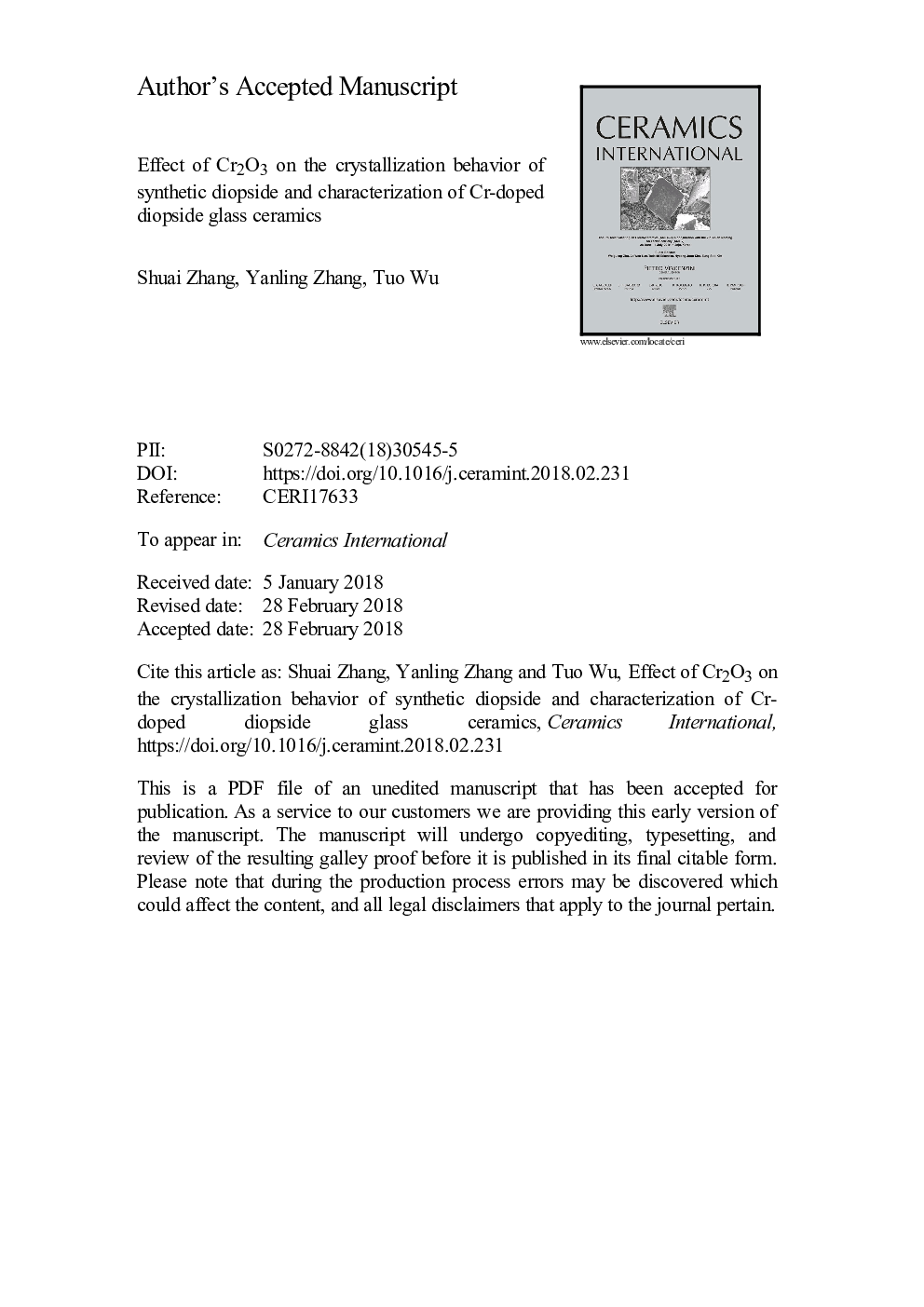| Article ID | Journal | Published Year | Pages | File Type |
|---|---|---|---|---|
| 7886898 | Ceramics International | 2018 | 43 Pages |
Abstract
Diopside is the main crystalline phase in silicate materials such as ceramics and glass-ceramics. Herein, the effect of Cr2O3 on the microstructure and crystallization behavior of synthetic diopside, as well as the solubility of Cr2O3 in diopside is discussed. Samples were prepared by the melting method and characterized by X-ray diffraction, scanning electron microscopy, energy dispersive spectrometry, and confocal laser scanning microscopy. Results show that the maximum achievable solubility of Cr2O3 in diopside is between 1% and 3% by weight, and that the magnesiachrome spinel formed by Cr2O3 can act as a nucleating agent for the diopside phase. Glass ceramics was prepared by synthesis slag which simulates the chromium-containing waste. The activation energy of crystallization is 274 KJ/mol and Avrami parameter is 3.23. The leaching behavior of glass ceramics was studied. Additionally, the effect of Cr2O3 on the mechanisms of phase change were discussed. The study provides a theoretical basis for the preparation of chromium containing waste-based silicate materials with diopside as the main crystalline phase.
Related Topics
Physical Sciences and Engineering
Materials Science
Ceramics and Composites
Authors
Shuai Zhang, Yanling Zhang, Tuo Wu,
